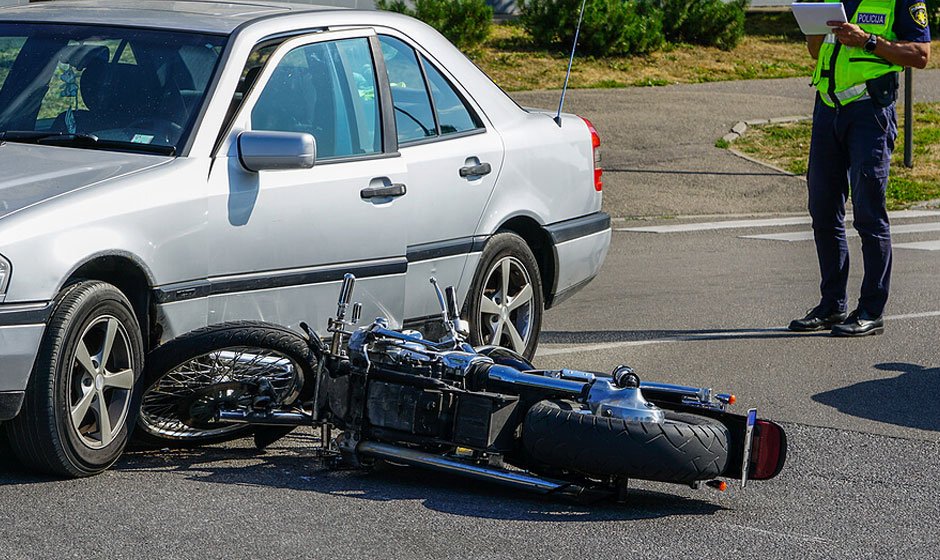Motorcycles and cars share the roads, but the outcomes of accidents involving these two types of vehicles can be drastically different. Motorcyclists are inherently more vulnerable than car occupants for a multitude of reasons, ranging from the physical design of the vehicles to the nature of human perception and reaction. Understanding these vulnerabilities is crucial for improving road safety and reducing the number of fatalities and severe injuries among motorcyclists.
1. Lack of Physical Protection
One of the most significant factors contributing to the vulnerability of motorcyclists is the lack of physical protection. Unlike cars, motorcycles do not have a protective metal frame, airbags, or crumple zones. In a collision, car occupants are shielded by these safety features which absorb much of the impact energy. Motorcyclists, however, are directly exposed to the force of the collision, which often results in more severe injuries or fatalities.
2. Smaller Size and Visibility Issues
Motorcycles are considerably smaller than cars, which makes them less visible to other drivers. This size discrepancy can lead to accidents where car drivers fail to see motorcycles, especially in blind spots or during lane changes. According to studies, drivers often overlook motorcycles at intersections or when merging, which significantly increases the risk of accidents.
3. Higher Exposure to Environmental Factors
Motorcyclists are more exposed to environmental hazards such as rain, wind, and road debris. These conditions can severely affect the stability and handling of a motorcycle. For example, wet or icy roads are much more dangerous for motorcycles, which have less traction and stability compared to cars. Sudden changes in weather can catch motorcyclists off guard, leading to accidents.
4. Differences in Vehicle Dynamics
The dynamics of motorcycles are fundamentally different from those of cars. Motorcycles are less stable due to having only two wheels, making them more susceptible to tipping over. Additionally, motorcyclists must maintain balance, which requires constant attention and skill. During emergency maneuvers, the risk of losing control is higher for motorcyclists than for car drivers.
5. Higher Speeds and Risk-Taking Behavior
Motorcycles are often associated with high speeds and risk-taking behavior. The thrill of riding and the capability of high-performance bikes can tempt motorcyclists to exceed safe speeds or engage in risky maneuvers such as weaving through traffic. This behavior increases the likelihood of accidents and the severity of injuries when they occur.
6. Insufficient Protective Gear
While there are strict regulations and recommendations for wearing protective gear, not all motorcyclists adhere to them. Helmets, jackets, gloves, and boots are designed to protect riders in the event of an accident. However, some riders opt for minimal or no protective gear, significantly increasing their risk of injury in a motorcycle accident. Even with full gear, the protection is far less than that offered by the interior of a car.
7. Delayed Perception and Reaction Time by Other Drivers
Car drivers often have a delayed reaction to motorcycles due to their smaller size and the general expectation of encountering larger vehicles. This delay can be crucial in preventing accidents. For instance, a driver might misjudge the speed of an approaching motorcycle, leading to unsafe maneuvers like turning left across an oncoming bike’s path.
8. Training and Licensing Discrepancies
Obtaining a motorcycle license typically involves less training and fewer requirements compared to a car driver’s license. While some countries have stringent testing procedures, others have minimal requirements, leading to varying levels of competency among motorcyclists. Insufficient training can result in riders being unprepared for real-world riding conditions, increasing their risk of accidents.
9. Psychological Factors and Risk Perception
Psychological factors also play a role in the vulnerability of motorcyclists. Motorcyclists might perceive their risk differently compared to car drivers, leading to a false sense of security or overconfidence. This misjudgment can result in inadequate preparation for potential hazards on the road.
10. Impact Forces and Human Body Tolerance
The human body can only tolerate a limited amount of force during an impact. In motorcycle accidents, the forces exerted on the rider’s body are usually higher due to the lack of a protective shell and safety features. Even low-speed collisions can result in severe injuries like fractures, internal bleeding, or traumatic brain injuries.
The vulnerabilities of motorcyclists in accidents compared to car occupants are multifaceted, involving physical, environmental, behavioral, and psychological factors. Addressing these vulnerabilities requires a comprehensive approach, including better education and training for both motorcyclists and car drivers, improved protective gear, and stricter enforcement of safety regulations. By understanding and mitigating the risks, we can create safer roads for everyone.

